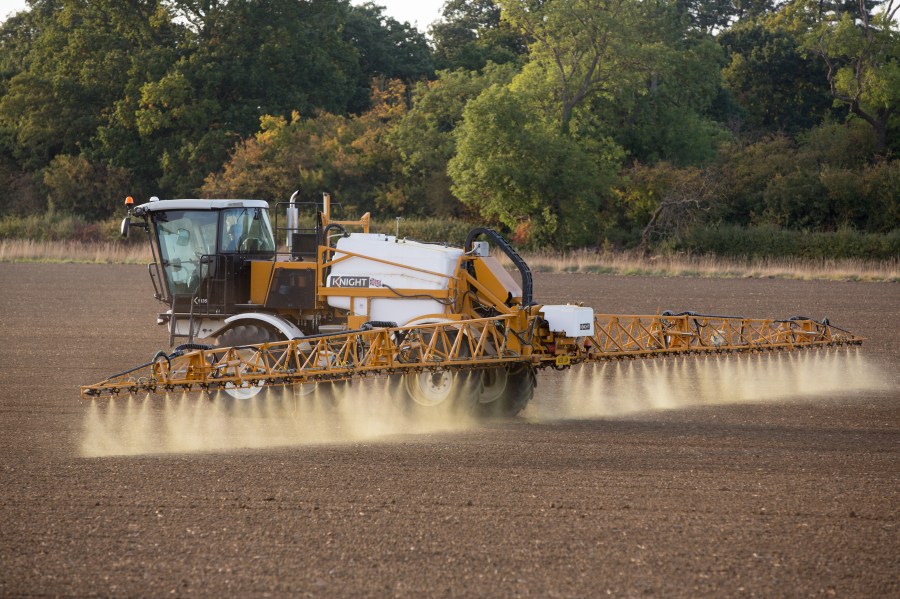Roll if you can, adapt the programme and choose the safest timing, are among some of the tips issued in the latest advice from Bayer about how to ensure a safe and effective autumn herbicide programme. Charlotte Cunningham reports.
While many growers are struggling to drill winter wheat crops, those that have managed to get some in the ground have also been contemplating the potential effects of the challenging conditions on weed control and crop safety from pre-emergence herbicides.
According to Bayer’s commercial technical manager, Ben Giles, it will be a more challenging year to marry efficacy and safety, so here are his top seven tips for how to achieve the best results:
- Be aware of the dangers. Areas of poor crop establishment are going to be a problem this season due to wet conditions. These areas are vulnerable to weeds such as black-grass growing in large numbers. However, it’s important to be careful when using herbicides as there is an increased risk of serious crop effects due to very wet soil and relatively weak crops.
- Roll if you can. In wet conditions, rolling after drilling is challenging but if possible is highly beneficial. It can help close any open slots and push more soil over shallow drilled seeds by breaking down clods on top of them. Improving seedbed quality by rolling slows down the movement of herbicides through the soil, preventing crop effects.
- Adapt the programme. The split residual strategy of a pre-em followed by another application 10-20 days later is difficult this season due to ground conditions. A one hit approach is more likely but heavy herbicide loading at this one application will increase the danger to crops, especially when they are already stressed. Overall, the big stacks and sequences used in recent seasons are not suited to this autumn.
- Choose the safest timing. The true pre-emergence timing, within 48 hours of drilling is the safest time to apply residual chemistry. The true peri-emergence timing when the crop is just appearing through the soil is the highest risk timing, particularly for big mixes of residual chemistry. Allowing the crop to get bigger than peri-emergence will tend to lessen the crop effects but weed control will be compromised.
- Select tank-mix partners carefully. Under conditions of stress in very wet soils, Liberator (flufenacet + diflufenican) is likely to be safer than Crystal (flufenacet + pendimethalin) as a base to the programme. Adding further chemistry to the mix increases the risk of crop effects depending on field conditions. Tank mixes containing prosulfocarb or pendimethalin are likely to be particularly risky at the peri-em timing.
- Understand how herbicides act in very wet soils. Apart from diflufenican, most residual herbicides are primarily root acting and move through the soil to the weed rooting zone to take effect. In very wet soils, actives may move slightly deeper to the crop rooting zone and cause crop effects. In addition, crop rooting is often poorer and shallower in wet conditions, increasing the risks particularly on lighter soils.
- Expect some minor crop effects. Where herbicides are applied, there is likely to be some crop yellowing and bleached halos on leaves. These effects are usually transitory, but they will slow the growth of the crop while it shrugs off the effect. But keep in mind that weeds will also be feeling the effects and are far more susceptible than the crop.




